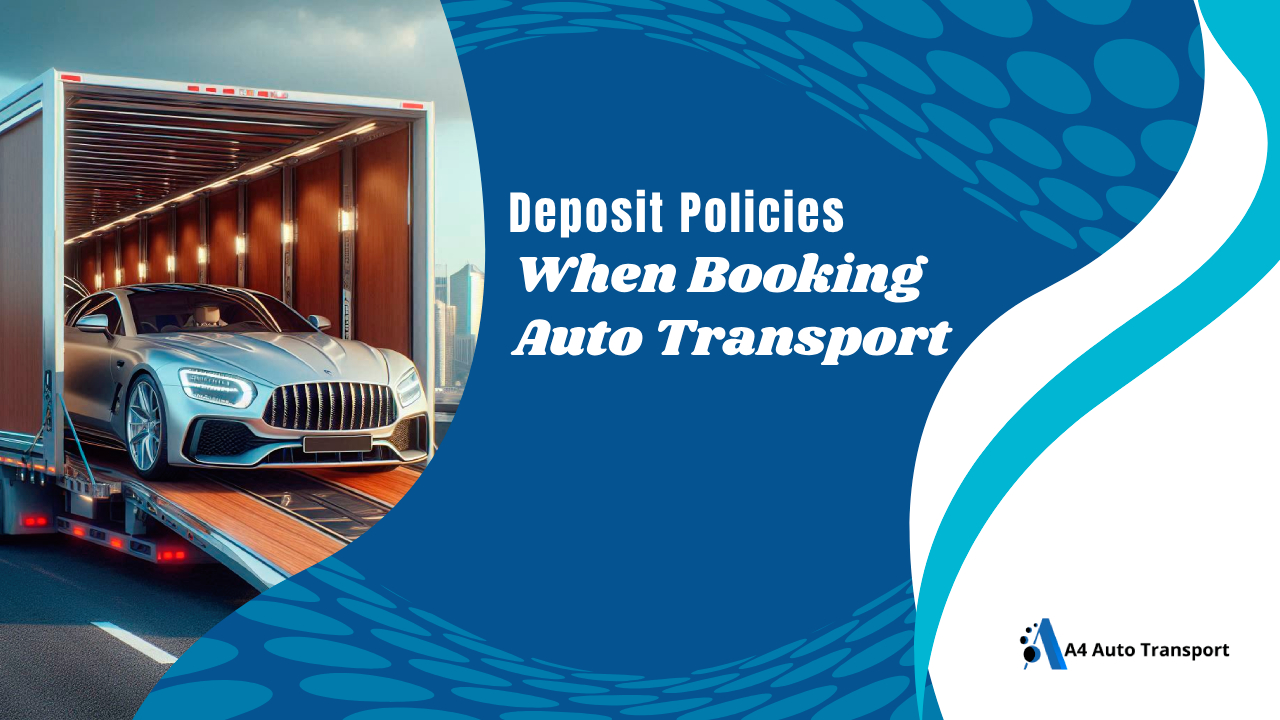How to Ship a Car: Step-by-Step Instructions for Smooth Auto Transport

Shipping a car you just bought can be made convenient and stress-free with various available options. This article will guide you through the necessary steps to ensure the safe and secure arrival of your vehicle at its desired location.
Research and choose a reliable auto transport company, decide on the shipping method, prepare your car by cleaning and documenting its condition, and remove personal belongings. Consider additional insurance coverage and obtain multiple quotes. Schedule the shipping date, review the contract and terms, make the payment, and track your shipment. Upon delivery, inspect your car and notify the transport company of any issues. With these steps, you can successfully ship your newly purchased car.

AutoStar Transport Express
Experience: 18+ Years
https://www.autostartransport.com/
954-250-5115

American Auto Shipping
Experience: 25+ Years
https://www.americanautoshipping.com/
(800) 930-7417
Here is a list of our steps on how to ship a car:
- Select an automobile transportation company.
- Choose a method for shipping your vehicle.
- Arrange communication with the seller or dealership.
- Verify the details on your bill of lading.
How to ship a car you recently purchased
How to Ship a Car: A Step-by-Step Guide
1. Select an automobile transportation company.
A. Get Multiple Quotes
- Compare Prices: Obtain quotes from several auto transport companies to compare prices and services.
- Understand Inclusions: Ensure you understand what each quote includes, such as insurance, delivery times, and any additional fees.
B. Research Transport Companies
- Check Credentials: Verify that the company is licensed and insured.
- Read Reviews: Look for customer reviews on platforms like Google, Yelp, and the Better Business Bureau to gauge the company’s reliability and service quality.
- Ask for Recommendations: Get suggestions from friends, family, or colleagues who have used car shipping services.
C. Verify Insurance Coverage
- Review Coverage: Confirm the transport company’s insurance coverage for your vehicle during transit.
- Consider Additional Insurance: If necessary, purchase additional insurance to cover any gaps in the transport company’s policy.
D. Schedule a Mechanical Check-Up
- Before Shipping: Have a mechanic inspect your car to ensure it’s in good condition for transport.
- After Delivery: Schedule another check-up after your car arrives to ensure it hasn’t sustained any damage during transit.
E. Inspect Your Car Upon Delivery
- Thorough Inspection: Carefully inspect your car upon delivery, comparing it to the initial inspection report.
- Report Any Damage: Note any new damage on the bill of lading and inform the transport company immediately.
- Complete Final Payment: Complete any remaining payment if required after confirming the condition of your car.
2. Choose a method for shipping your vehicle.
There are many methods for shipping cars that come with every move and auto transport business. It can be difficult to choose which one is ideal for you, though. Find some of the newest car transport techniques and how they might apply to you below:
The practice of loading numerous vehicles onto a multi-car car carrier that is left outside and exposed to the elements is known as open car transport and is said to be the most affordable way to convey a car. Due to the lack of security, some people view open transit as being riskier, yet there is little chance that your car will be damaged.
Cars will be transported in an airtight, weatherproof car trailer using enclosed transport, which is the more expensive of the two choices. Since enclosed transport provides maximum weather protection, it is a secure method of moving expensive vehicles.
3. Arrange communication with the seller or dealership
To coordinate with the person or dealership that sold you the vehicle for car delivery, follow these steps.
- Inform the dealer about the scheduled pickup time provided by the car transport company.
- Ensure that the dealer is available during that time to hand over the necessary items to the delivery driver.
- These items include the car keys, a copy of your driver’s license, the car’s registration and title, and proof of car insurance.
- Communicate these requirements clearly to the dealer, emphasizing the importance of their presence during the pickup.
- Confirm all the details with the dealer in advance to ensure a smooth and successful car delivery process.
4. Verify the details on your bill of lading
When the driver arrives, ensure the car dealer doesn’t hand over the keys without receiving a bill of lading. This legal contract details the shipment destination and car condition at pickup. If the driver doesn’t ask for a bill of lading, it may indicate a scam.
Ask the dealer to contact you before signing, to ensure the document’s accuracy. Once confirmed, allow the dealer to sign and release the car. The driver will load it onto the truck, and request a copy of the bill of lading for your records. These steps provide legal protection and maintain a reliable record of the delivery.
Why you should ship your car instead of driving it
Shipping your car instead of driving it offers several compelling advantages that can save you time, money, and stress. Here are the key reasons why you should consider shipping your vehicle:
1. Save Time and Energy
Driving long distances can be time-consuming and exhausting. Shipping your car allows you to avoid a lengthy road trip, giving you more time to focus on other important tasks or simply relax.
2. Reduce Wear and Tear
Long-distance driving can put a lot of wear and tear on your vehicle, leading to potential mechanical issues and increased maintenance costs. By shipping your car, you preserve its condition and avoid unnecessary mileage.
3. Minimize the Risk of Accidents and Breakdowns
Road trips come with the risk of accidents, breakdowns, and other unexpected events. Shipping your car eliminates these risks, ensuring your vehicle arrives safely at its destination without the hazards of the road.
4. Cost-Effective
While it may seem cheaper to drive, the costs can add up quickly. Expenses such as fuel, lodging, meals, and potential vehicle repairs can make driving more expensive than anticipated. Shipping your car can often be more economical, especially for long distances.
5. Convenience
Shipping your car provides unparalleled convenience. Professional auto transport companies handle all aspects of transportation, from pickup to delivery. This means you don’t have to worry about planning the route, finding accommodations, or dealing with any travel-related stress.
6. Maintain Your Focus
If you’re relocating for work, attending school, or handling other important commitments, shipping your car allows you to stay focused on these priorities. Letting professionals take care of your vehicle transport means you can concentrate on what matters most.
7. Protect Your Health
Driving long distances can be physically taxing and pose health risks, especially during extreme weather conditions or if you have any pre-existing health concerns. Shipping your car ensures you avoid these potential health risks.
8. Flexibility
Shipping your car offers greater flexibility in your travel plans. You can fly to your destination, potentially saving days of travel time, and have your car meet you there. This flexibility can be particularly beneficial for busy schedules or tight timelines.
Best Practices For Shipping a Car
To ensure successful car shipping:
- ✓Get multiple bids or quotes.
- ✓Schedule a mechanical check-up before and after delivery.
- ✓Thoroughly inspect your car’s condition before and after delivery.
- ✓Confirm insurance coverage for your chosen transportation method.
Following these steps will help you ship your car safely and efficiently without having to drive it yourself.
Conclusion:
Shipping a car doesn’t have to be a hassle. By following these steps and preparing adequately, you can ensure a smooth and successful auto transport experience. With proper research, preparation, and communication, you can safely and efficiently ship your newly purchased car to its desired location.
FAQ’s
How long does it take to ship a car?
Can I ship personal items in my car during transport?
Is my car insured during shipping?
Should I choose open transport or enclosed transport for my car?
How do I prepare my car for shipping?
a4AutoTransport is a group of auto transport researchers and experts that comes in handy for anyone who wants to move their car/vehicle without putting extra miles on the odometer. At a4AutoTransport, We researched over a hundred car shipping companies, interviewed real customers and industry leaders, and collected nearly 500 quotes to find the nation’s best auto transport companies. With our combined 5 years of industry experience and research, we’ll help you find the right car shipper for your budget.








